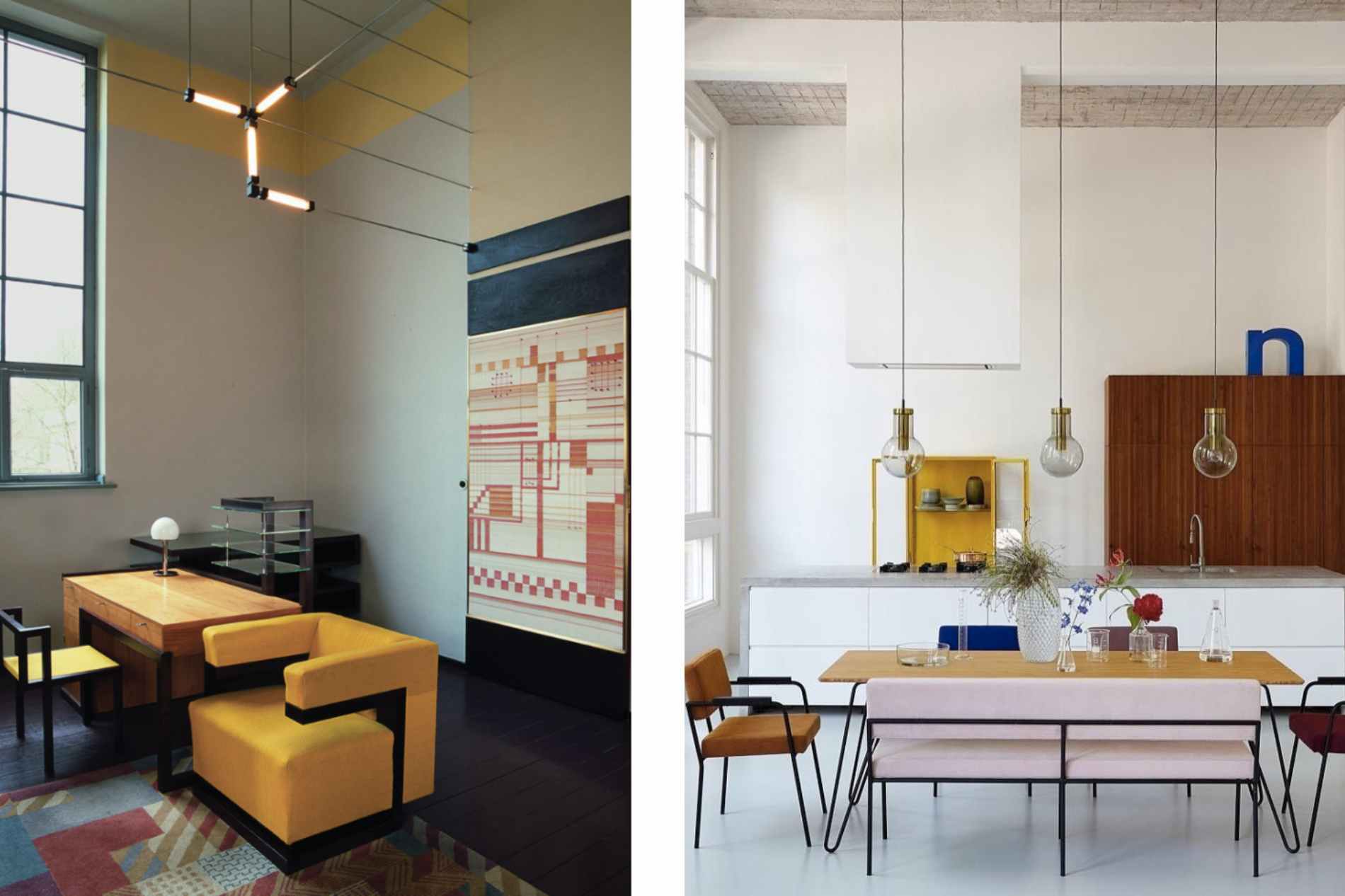Bauhaus interior design is more than just a style; it's a philosophy that has shaped the way we approach modern living spaces. Originating in the early 20th century, Bauhaus design principles have had a profound influence on architecture, furniture, and interior decor. In this article, we'll explore what Bauhaus interior design is, why it's significant, and how you can incorporate its principles into your own home.
What is Bauhaus Interior Design?
Bauhaus, which literally translates to "building house" in German, was a revolutionary design movement founded by architect Walter Gropius in 1919. It aimed to bring together fine art, craftsmanship, and technology to create functional yet aesthetically pleasing designs. Bauhaus sought to eliminate the ornate excesses of previous architectural styles and focus on simplicity, utility, and mass production.

Bauhaus interior design is characterized by several key principles:
Form Follows Function: Bauhaus designers believed that the form of an object should be determined by its intended function. This principle emphasizes practicality and efficiency in design, resulting in clean lines, simple shapes, and minimal ornamentation.
Minimalism: Bauhaus interiors often feature minimalist aesthetics, with an emphasis on open spaces, clean surfaces, and a lack of clutter. Furniture and decor are typically sleek and streamlined, with an emphasis on geometric shapes and industrial materials such as steel, glass, and concrete.
Integration of Art and Technology: Bauhaus designers embraced new materials and technologies, incorporating them into their designs to create innovative and cutting-edge interiors. They also sought to blur the boundaries between art and design, viewing furniture and architecture as forms of artistic expression.
Geometric Shapes and Primary Colors: Bauhaus interiors frequently feature geometric shapes such as squares, circles, and triangles, used both in furniture design and architectural elements. Primary colors, particularly red, blue, and yellow, are often used in combination with black, white, and gray to create bold, visually striking spaces.
Open Floor Plans: Bauhaus architecture often incorporates open floor plans, with flexible living spaces that flow seamlessly from one area to another. This design approach promotes a sense of openness and connectivity, allowing for greater interaction and socialization within the home.

Why Bauhaus Interior Design Matters
Bauhaus interior design remains relevant and influential today for several reasons:
Timeless Aesthetics : The clean lines, minimalist aesthetics, and focus on functionality of Bauhaus design have a timeless appeal that transcends trends and fads. Bauhaus interiors continue to inspire contemporary designers and homeowners alike with their modern sensibility.
Efficiency and Sustainability: Bauhaus principles of efficiency and sustainability are particularly relevant in today's world, where environmental concerns are paramount. By prioritizing function over form and embracing new materials and technologies, Bauhaus design offers solutions for creating sustainable and eco-friendly living spaces.
Adaptability: Bauhaus interior design is highly adaptable and can be applied to a variety of architectural styles and spaces. Whether you live in a modern loft apartment or a historic home, you can incorporate Bauhaus principles to create a stylish and functional interior that suits your lifestyle.
Innovation and Experimentation: Bauhaus design encourages innovation and experimentation, pushing the boundaries of what is possible in interior design. By embracing new materials, technologies, and forms, Bauhaus designers paved the way for future generations to explore new design possibilities.

How to Incorporate Bauhaus Principles into Your Home
If you're interested in incorporating Bauhaus interior design principles into your home, here are a few tips to get you started:
Focus on Functionality: When selecting furniture and decor, prioritize functionality and utility. Choose pieces that serve a purpose and enhance the usability of your space.
Embrace Minimalism: Keep your interiors clean and clutter-free, with an emphasis on simplicity and restraint. Opt for furniture with clean lines and simple shapes, and avoid excessive ornamentation.
Play with Geometry and Color: Experiment with geometric shapes and primary colors to create visual interest and contrast in your space. Consider incorporating bold accents such as a red sofa or a blue accent wall to add a pop of color to your interiors.
Create Open and Flexible Spaces: If possible, embrace open floor plans that allow for seamless flow between different areas of your home. Use furniture and architectural elements to delineate separate zones while maintaining a sense of connectivity and openness.
Mix Old and New: Don't be afraid to mix vintage and contemporary pieces to create a layered and eclectic look. Bauhaus design is all about innovation and adaptation, so feel free to blend old and new elements to create a space that feels uniquely yours.
In conclusion, Bauhaus interior design offers a timeless and versatile approach to creating modern living spaces. By embracing principles of functionality, minimalism, and innovation, you can create a stylish and functional interior that reflects your personal taste and lifestyle. Whether you're furnishing a new home or updating your current space, consider incorporating Bauhaus design principles to create a space that is both beautiful and practical.











